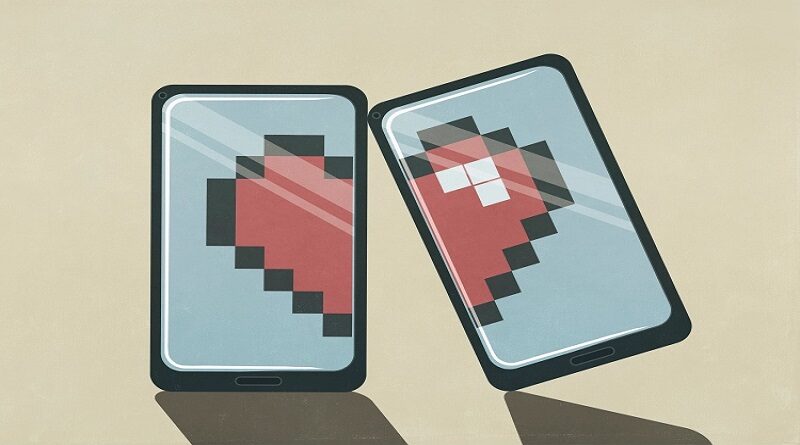Why I fell out of love with Twitter
Last week, a friend whom I considered a mentor announced on LinkedIn that he was finally cutting the cord on Twitter. This person was one of the first people that I followed when I sign up for Twitter back in 2009.
Those were the early days early enough that I could take out a handle spelling out my name (nobody had taken “TonyBaer” yet). Twitter was a lifeline for me, who was rebuilding a business and network of professional contacts after a lost decade of dot com bust and service-oriented architecture. It was a great way to get back up to speed, not just on what was happening, but what colleagues were thinking. And Twitter wasn’t about flame tweets, but about discussion.
The fun part was seeing all the people you followed at conferences. Twitter gave us the guilty pleasure of, in effect, passing silent notes in the back of the classroom.
We all know about the failed promise of social networks. Premised on the idea that networks could monetize a way to bring us all together, a decade and a half on, for the most part the idealism has worn off. Instead of connecting, these networks are dividing us, reinforcing social bubbles, and making them smaller.
But this post is not about the failings of social networks in general, but a reflection of my journey through the ups and downs of Twitter.
Twitter’s age of innocence
Way back in those innocent days, Twitter was a club of early adopters with disproportionate presence in the tech industry. As noted, this predated LinkedIn, although it was not the first such venture. We recall IBM’s abortive infatuation with Second Life, as if avatars would somehow become the surrogates for interaction. It also predated the tech industry’s infatuation with Facebook, which kicked off a few years later as part of an idea of more fully rounding out the professional relationships we had by getting the personal dimension.
Ironically, the personal side was also part of the early Twitter experience. During the week, the threads would be topical. On weekends, it became an “unplugged” experience where we might exchange references on favorite musicians or hiking experiences. On weekends, Twitter was Facebook before Facebook.
In the early days, Twitter was a meritocracy. If I followed you, I’d see your tweets and vice-versa. And I’d vet new followers, making sure to keep bots out of the conversation. And because I followed people whom I respected; the Twitter feeds were truly engaging.
Engagement became less engaging
About 3-4 years ago, Twitter started becoming boring and predictable. The first symptom was that follower count topped out, followed by noticing that my posts were drawing far fewer reactions. And I was seeing tweets from a much smaller coterie of sources. It seemed that fewer of my followers were seeing my tweets and vice versa. And the feeds became predictable, coming from the same usual suspects.
As the bubble got narrower, it got more polluted. Now news feeds reared their ugly head. On Twitter, I followed fellow professionals in my field – analysts, tech marketers, heads of product management and so on. If I wanted news, I didn’t go to Twitter, I went to the sites of the New York Times, Washington Post, Wall Street Journal, BBC and others. Yet Twitter didn’t give me a choice; they ramrodded news into my feed whether I wanted it or not. And Twitter also pushed provocative tweets based on its perception of my political and social leanings.
In a phrase, the algorithms took over. Twitter decided it knew better what I should see and began feeding me “optimized” content that was designed, not to provide a better experience, but provoke reaction. It provided little choice.
Theoretically, Twitter’s Latest Tweets setting should give you the raw feed, but if that’s the case, then most of the people I follow have left Twitter. I’m sure many of them have, but I’m also sure that many of them are still there although maybe not for much longer.
And, by the way, I still can’t get rid of the extraneous news or social content.
The rationale for engagement
Ad models have supposedly proven that engagement drives social media stickiness. At face value, there’s little to disagree with. The disconnect lies in how “engagement” is functionally defined. Most of the consumer-based social networks view engagement as driven by emotion that in turn drives interaction, and that interaction keeps people on the platform and seeing ads. Getting upset or outraged about some random tweet or something in the news feed? Guess you’ll stay there longer to react. There have been numerous posts about the science or pseudoscience behind engagement algorithms.
The specter of Elon Musk taking over is cold comfort. Removing what’s left of content moderation at Twitter will only add gasoline to the dumpster fire.
At this point, LinkedIn appears to be the last refuge for professionals seeking to have professional engagement. Admittedly, that’s the core mission of the platform, and most members appear to be committed to keeping things professional; and if they don’t, you don’t have to connect to them. LinkedIn is not force-feeding your news stories. And for content contributors, LinkedIn offers transparency as you can see the actual reach of your posts or articles.
Ownership also makes a difference. Unlike Twitter and Facebook, Microsoft is a much more broadly diversified business, and one that places value on serving the enterprise (in addition to consumers). The brand equity of LinkedIn, and Microsoft in general, would be tarnished if associated with fake news. Whereas for Twitter and Facebook, emotion is viewed as stoking the advertising model. At this point, I trust Microsoft over Twitter or Elon Musk to keep the conversation from going off the rails.
But I won’t formally quit Twitter for one big reason: I don’t want somebody else seizing my handle and impersonating me. Now that you all know my Twitter handle, you can look forward to that one tweet a year from me. It will be golden.




